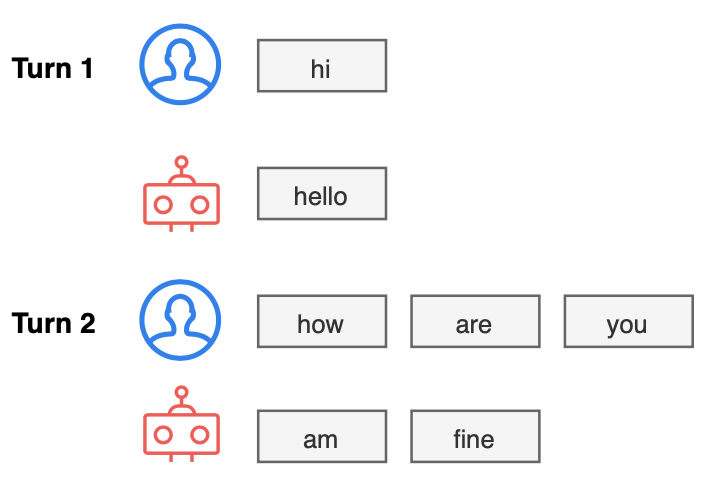File size: 3,863 Bytes
05bd545 2ffce8f b40bf79 2ffce8f b40bf79 44785e2 b40bf79 e629405 1dc793f b40bf79 2ffce8f |
1 2 3 4 5 6 7 8 9 10 11 12 13 14 15 16 17 18 19 20 21 22 23 24 25 26 27 28 29 30 31 32 33 34 35 36 37 38 39 40 41 42 43 44 45 46 47 48 49 50 51 52 53 54 55 56 57 58 59 60 61 62 63 64 65 66 67 68 69 70 71 72 73 74 75 76 77 78 79 80 81 |
---
license: apache-2.0
---
To re-create and use the chatbot for inference, follow these steps:
1. Download the model artifacts from the Hugging Face Model Hub by following the instructions in the article.
2. Clone the [GitHub repository](https://github.com/arunprsh/multi-turn-chatbot-gpt-sagemaker) for the multi-turn chatbot with GPT-Neo and Sagemaker.
3. Navigate to the `03-evaluate` directory to access the notebook with the code for inference.

For a comprehensive, step-by-step guide on how to replicate the creation of a multi-turn chatbot using GPT-Neo, please refer to the Medium article [here](https://medium.com/@shankar.arunp/building-a-multi-turn-chatbot-with-gpt-and-sagemaker-a-step-by-step-guide-7d75f33ccea1).
##### Sample inference code:
```python
def chat():
logger.info('[Entering chat session ...]')
logger.info(f'To quit the conversation and reset memory, please type "{RESET_CMD}"')
query_history = []
while True:
utterance = input('You: ')
# Exit session if user types the RESET prompt
if utterance == RESET_PROMPT:
logger.info(f'[Exiting chat session]')
break
# Add speaker 1 id to start of query and encode it using the tokenizer
input_ids = tokenizer.encode(utterance)
input_ids = [speaker_1_id] + input_ids
query_history.append(input_ids)
if len(query_history) >= MAX_TURNS:
num_exceeded = len(query_history) - MAX_TURNS
query_history = query_history[num_exceeded:]
# Add beginning of sequence and end of sequence ids to input_ids, and convert it to a tensor
input_ids = [bos_id] + list(chain.from_iterable(query_history)) + [speaker_2_id]
# Determine the speaker of the first turn based on the first speaker id
start_sp_id = query_history[0][0]
# Determine the speaker of the next turn
next_sp_id = speaker_1_id if start_sp_id == speaker_2_id else speaker_2_id
# Create token type ids for each turn based on the speaker of the turn
token_type_ids = [[start_sp_id] * len(turn) if h % 2 == 0 else [next_sp_id] * len(turn) for h, turn in enumerate(query_history)]
# Add beginning of sequence and end of sequence ids to token_type_ids, and convert it to a tensor
token_type_ids = [start_sp_id] + list(chain.from_iterable(token_type_ids)) + [speaker_2_id]
# Determine the length of the input_ids tensor
input_len = len(input_ids)
# Convert input_ids and token_type_ids to PyTorch tensors, add an extra dimension, and move to the device (GPU)
input_ids = torch.LongTensor(input_ids).unsqueeze(0).to(device)
token_type_ids = torch.LongTensor(token_type_ids).unsqueeze(0).to(device)
# generate a response from the model given some input
output_ids = model.generate(input_ids=input_ids,
token_type_ids=token_type_ids,
pad_token_id=eos_id,
do_sample=True,
top_p=TOP_P,
max_length=MAX_LEN)
# extract the generated sequence from the output and remove the input sequence
output_ids = output_ids[0].tolist()[input_len:]
# convert the generated sequence of token ids into text
response = tokenizer.decode(output_ids, skip_special_tokens=True)
print(f'Bot: {response}')
# append the generated sequence to the query history as token ids
query_history.append([speaker_2_id] + tokenizer.encode(response))
``` |